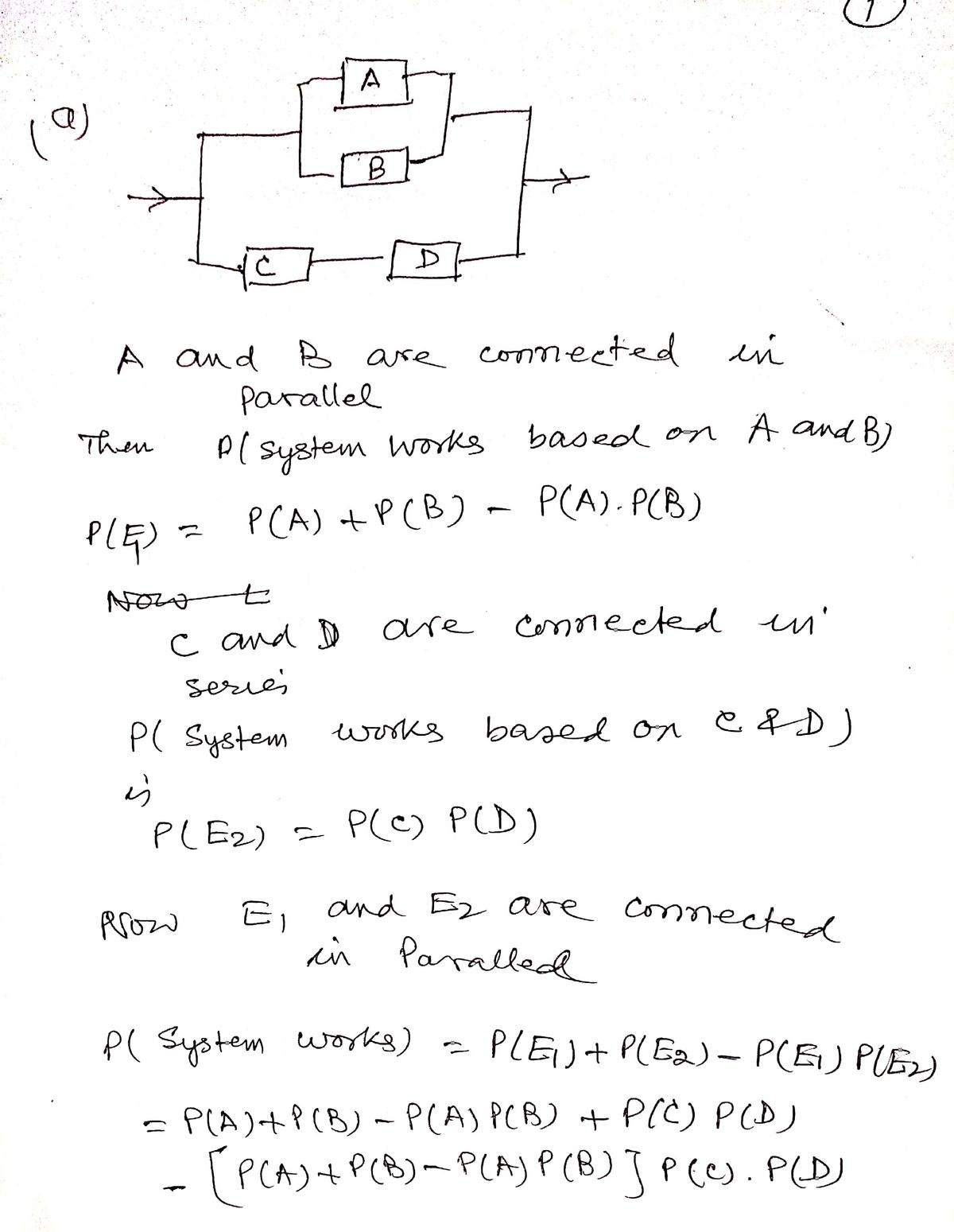one component doesn't influence the operation/failure of another). If event A is defined as "component A works" and so on, then P(A) = 0.9, P(B) = 0.88, P(C) = 0.94, and P(D) = 0.98. a. Calculate P(system works) as a function of only the P() notation - no numbers. b. Calculate the quantity for P(system works). D
one component doesn't influence the operation/failure of another). If event A is defined as "component A works" and so on, then P(A) = 0.9, P(B) = 0.88, P(C) = 0.94, and P(D) = 0.98. a. Calculate P(system works) as a function of only the P() notation - no numbers. b. Calculate the quantity for P(system works). D
A First Course in Probability (10th Edition)
10th Edition
ISBN:9780134753119
Author:Sheldon Ross
Publisher:Sheldon Ross
Chapter1: Combinatorial Analysis
Section: Chapter Questions
Problem 1.1P: a. How many different 7-place license plates are possible if the first 2 places are for letters and...
Related questions
Question

Transcribed Image Text:Problem 4
Consider the system of components connected as depicted below. The system can be thought
of as being comprised of two subsystems: one with components A and B, and the other with
components C and D. Components A and B are connected in parallel, therefore that subsystem
works iff either A or B works. Since C and D are connected in series, that subsystem works iff
both C and D work. Components work independent of each other (that is, operation/failure of
one component doesn't influence the operation/failure of another). If event A is defined as
"component A works" and so on, then P(A) = 0.9, P(B) = 0.88, P(C) = 0.94, and P(D) =
0.98.
a. Calculate P(system works) as a function of only the P(-) notation - no numbers.
b. Calculate the quantity for P(system works).
с
D
Expert Solution
Step 1: Reliability of the system is obtained

Trending now
This is a popular solution!
Step by step
Solved in 3 steps with 2 images

Recommended textbooks for you

A First Course in Probability (10th Edition)
Probability
ISBN:
9780134753119
Author:
Sheldon Ross
Publisher:
PEARSON


A First Course in Probability (10th Edition)
Probability
ISBN:
9780134753119
Author:
Sheldon Ross
Publisher:
PEARSON
